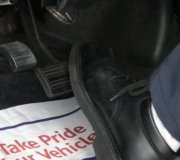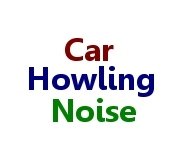One of our other experts says he can find the noisy bearing by rotating a front wheel with one hand while feeling for the vibration on the spring or strut, (on small cars) with the other hand. I never tried that myself yet.
Older Chryslers, Fords, Toyotas, and Hondas used pressed-in bearings. With those it was easy to determine which one was noisy by turning left and right as in changing lanes at 35mph. If the noise got worse when turning left, the right bearing was the culprit. They get noisier when more vehicle weight shifts onto them, and get real quiet when you turn the other way.
With the newer bolt-on assemblies, it is impossible to know for sure which one is noisy just from driving the vehicle. I used to be fooled many times until I started using the stethoscope. You might turn left, it gets louder meaning it should be the right one that's noisy, and it turns out to be the left one. It can sound like the noise is coming from the right side, and the left bearing is noisy. There's just no sure-fire way to tell by driving, but the good news is if you replace the wrong one, the old one can be installed on the other side. With the older pressed-in bearings, they had to be destroyed to remove them, but fortunately there was never a need to remove them other than to replace them.
Once I started using the stethoscope, I replaced the correct bearing 100 percent of the time. When you listen underneath next to each bearing, one will sound a little rough, but then the other one will be very noticeably louder. If you don't have a stethoscope, auto parts stores sell them for under ten bucks. If you have a Harbor Freight Tools store nearby, they will probably have them too.
Thursday, May 24th, 2012 AT 9:03 PM


